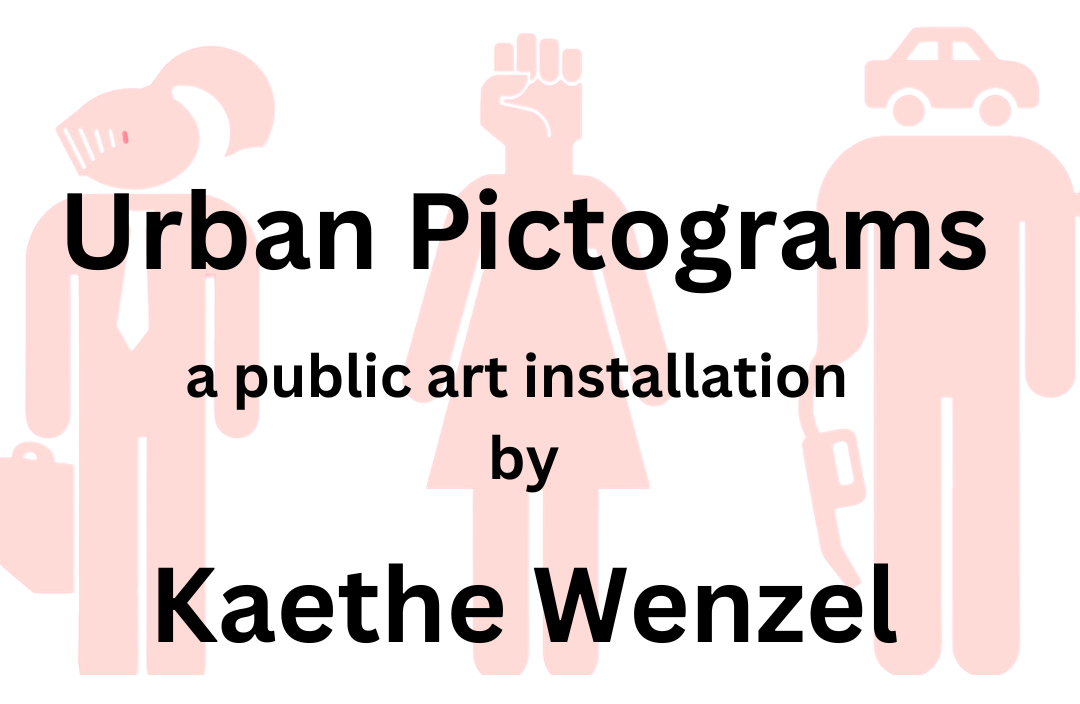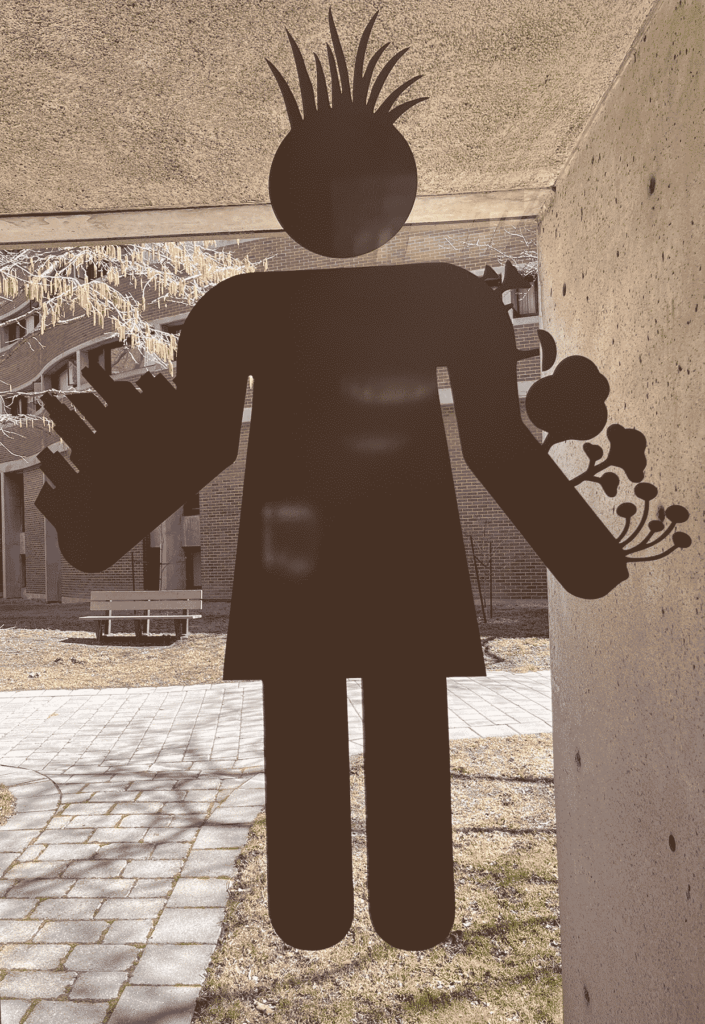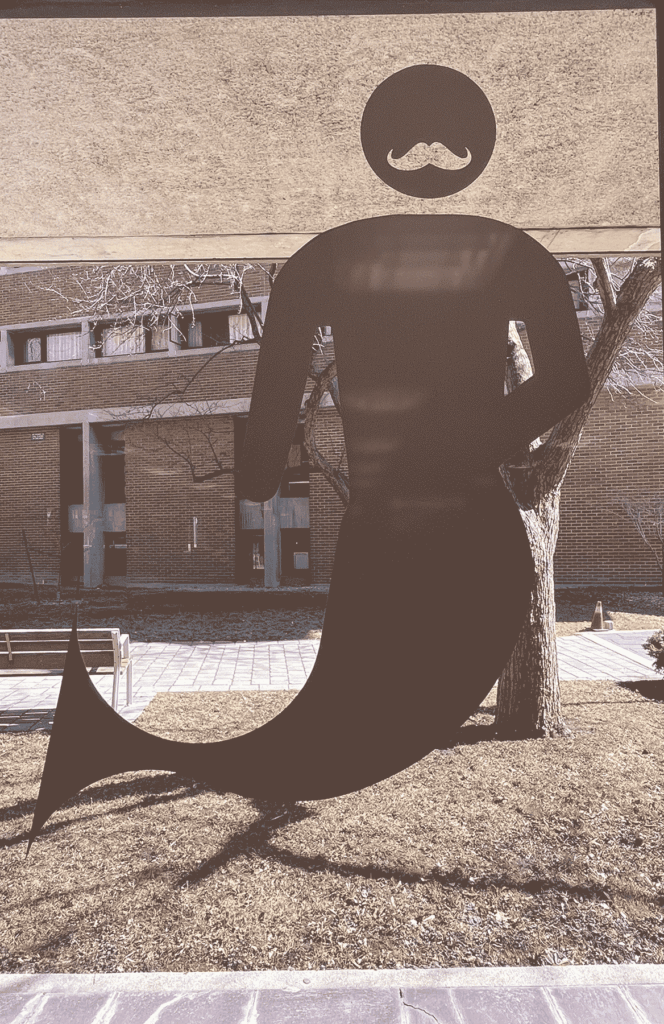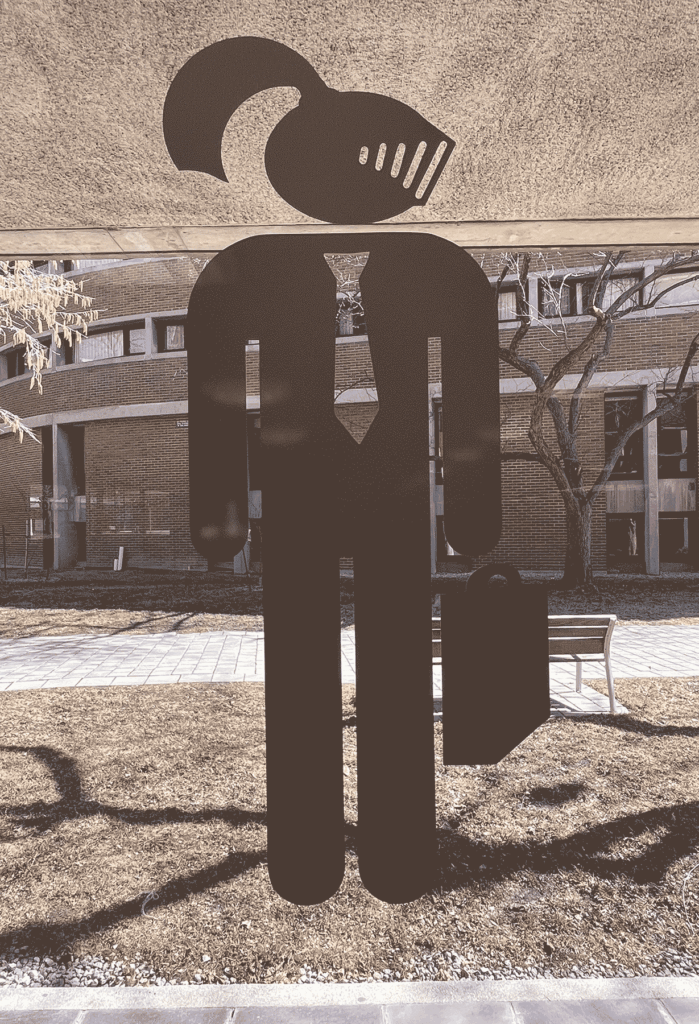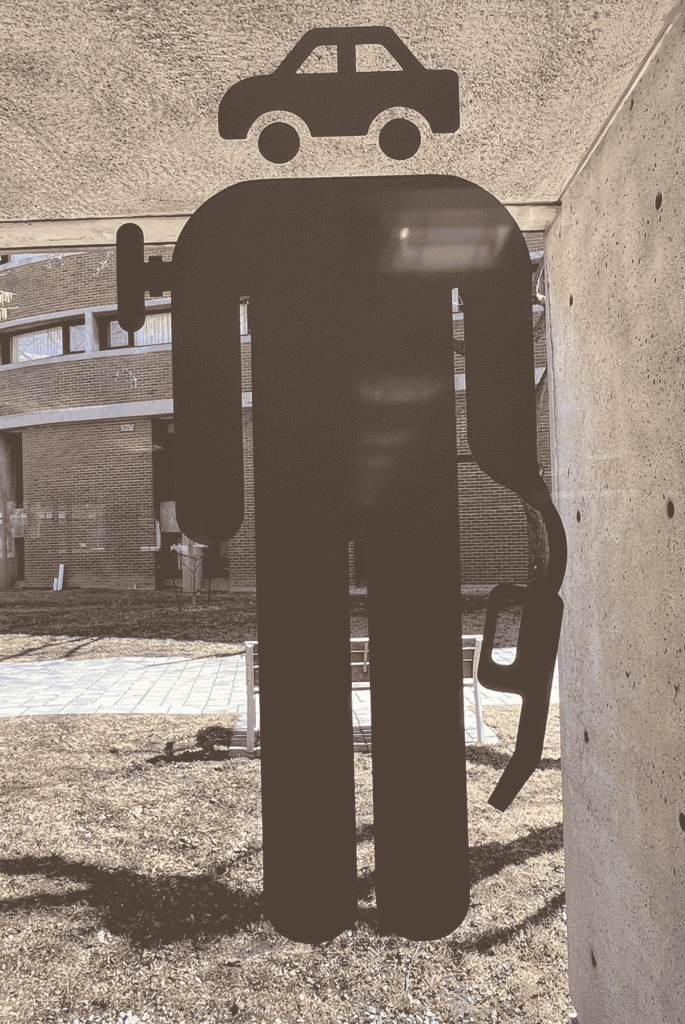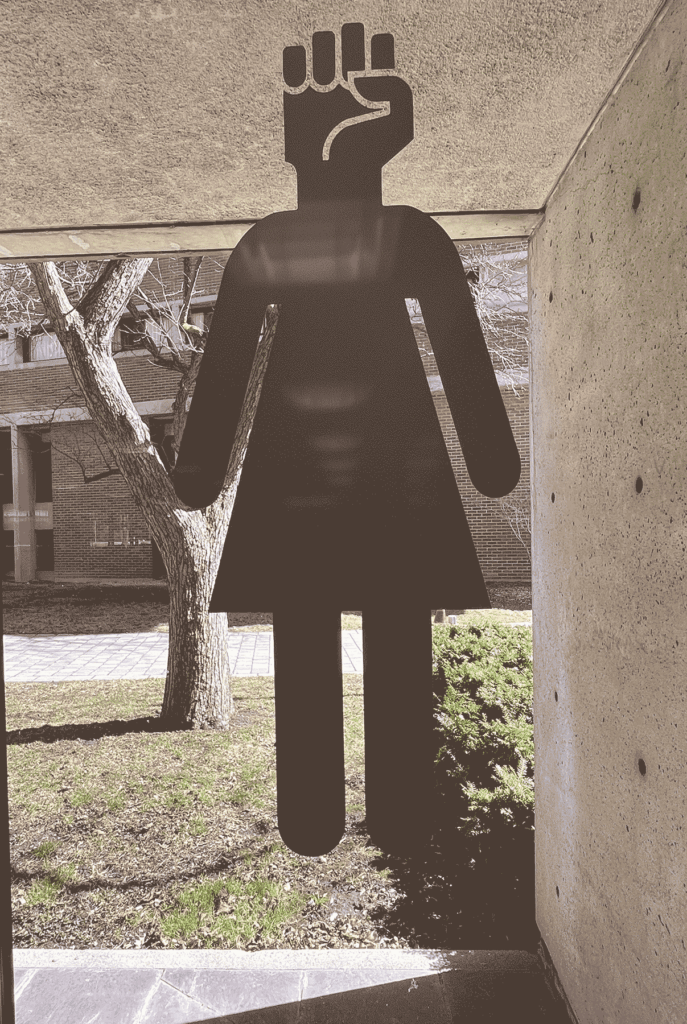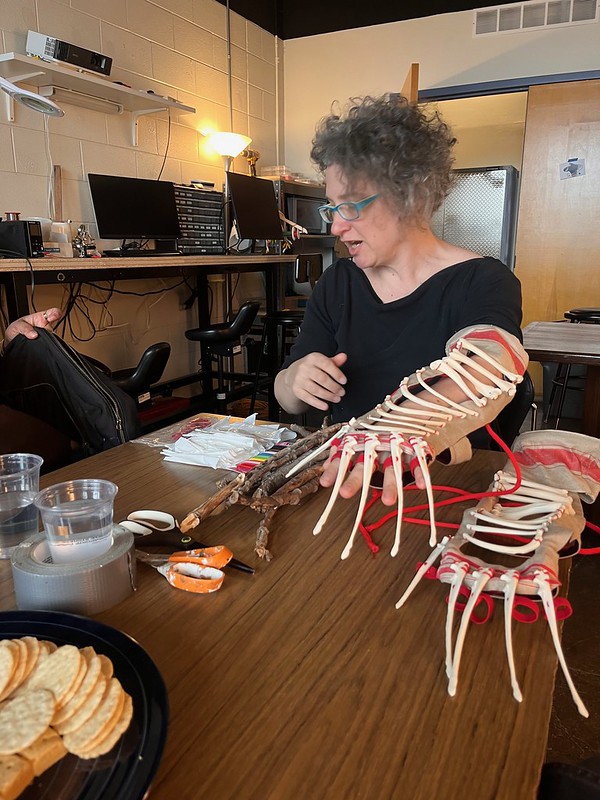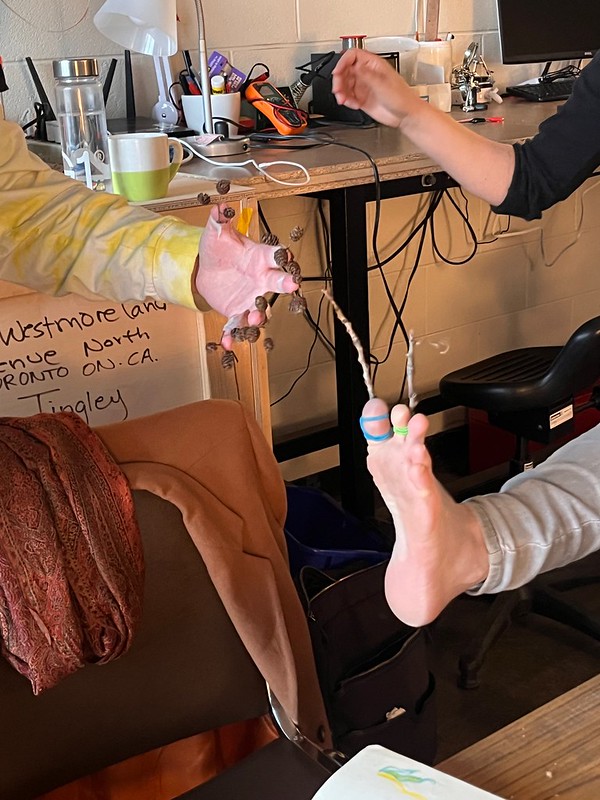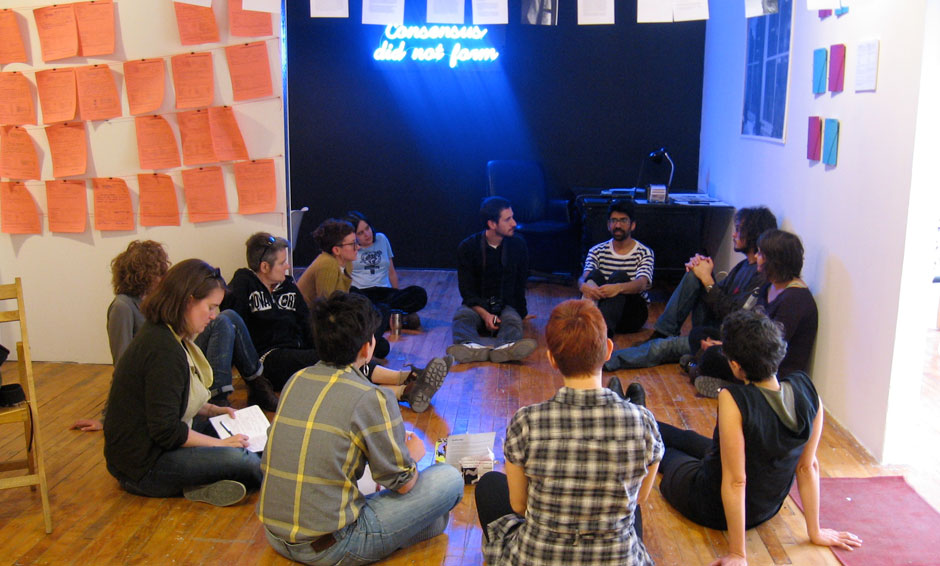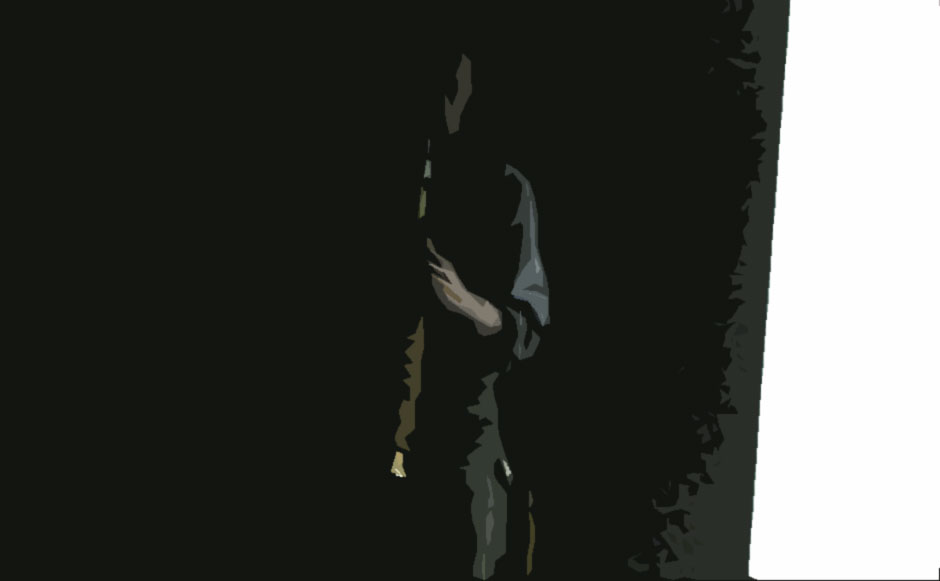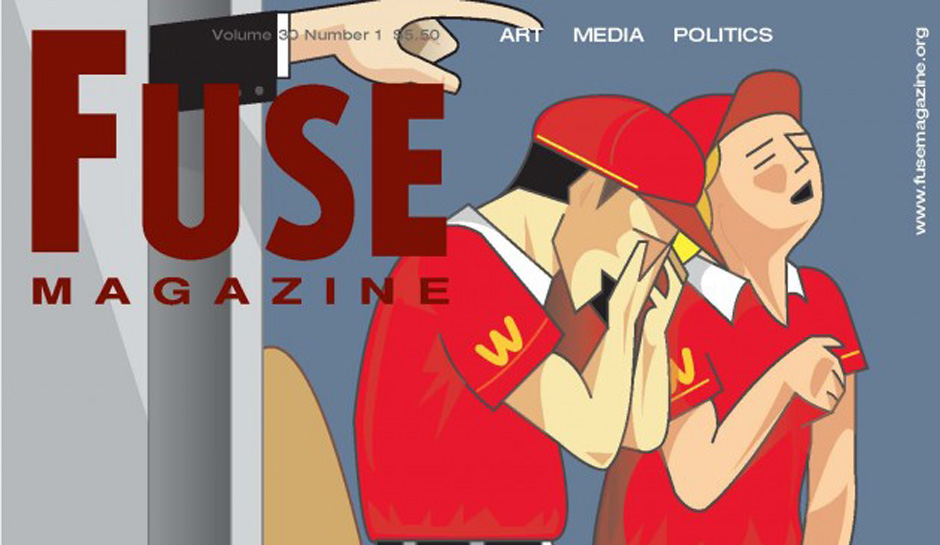After all, the world is being produced collectively, across the borders of time and geography as well as across the boundaries of the individual. –Kaethe Wenzel
Kaethe Wenzel is a Berlin-based interdisciplinary artist. Wenzel has used a diverse variety of media and material such as textiles, found items, animal bones, plants, soil and other organic material, as well as small electronics to produce urban interventions and objects of speculative fiction at the intersection of art, science and technology. Wenzel challenges the notion of the artwork as an object to be observed in a gallery or museum, and the gallery as a constrained space with relatively limited interactions. Her extensive body of work extends to building facades, billboards, entire neighborhoods and the city, translating into urban interventions to explore the collective production of culture and the creation and negotiation of public space.
Continuing several years of collaboration and friendship, I invited Wenzel to lead a workshop for the students of the NEWOne program at New College to challenge the urban rules and cultural stereotypes of street signs. The workshop culminated in a public art installation now permanently (and gloriously) visible on the windows of the D.G. Ivey Library at the University of Toronto.

The installation was the result of an intense one month long dialogue between Wenzel and the college students, which began before she arrived in Toronto and continued for the entirely of her short almost 3 weeks residence. Throughout the academic year, our classes have been exploring important issues pertaining to social justice. During this workshop, we invited students and members of the community to work together to create urban pictograms (or urban stickers) that challenge inequalities and reaffirm principles of social justice.
During her residence, Wenzel gave an artist talk at the Fields Institute where she walked us through her impressive portfolio and surprised us with a demonstration of her bone costumes, a series of corset inspired wearables produced out of recuperated animal bones and fabric. The next day, she met with graduate students from the SLOLab and instructed them how to create wearables from found natural material (plants, pieces of fabric, paper, electronics etc..)
